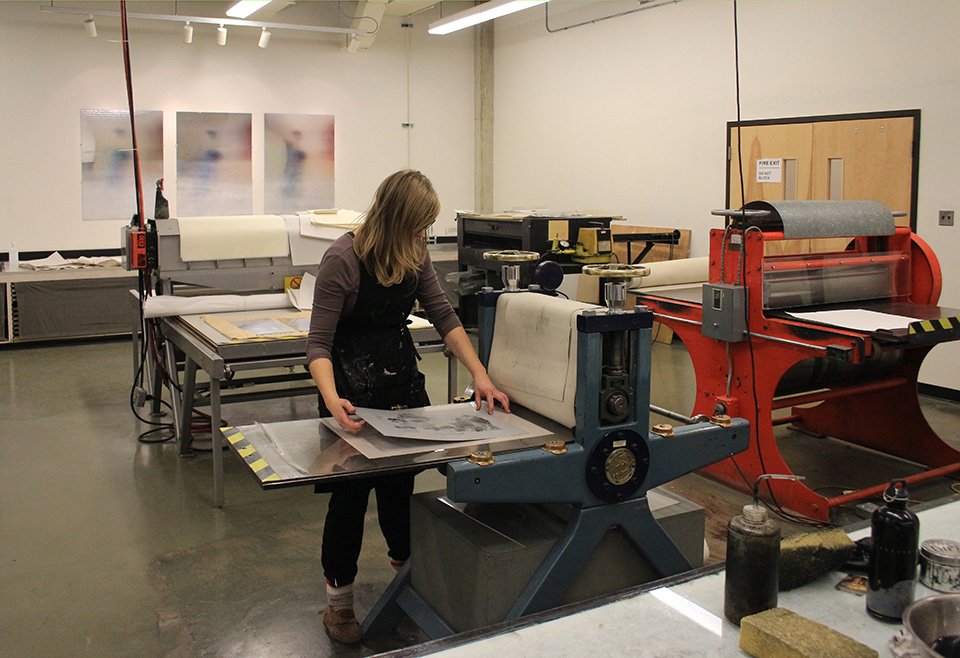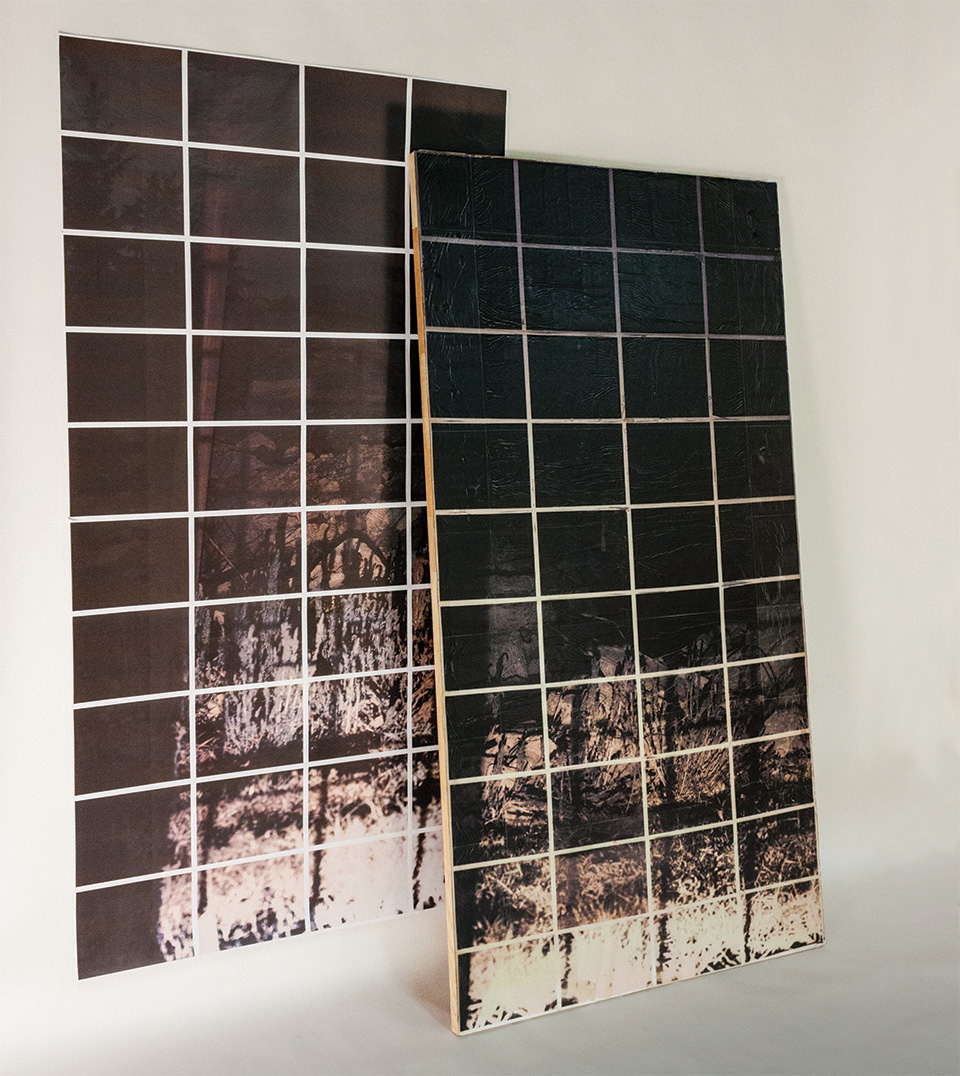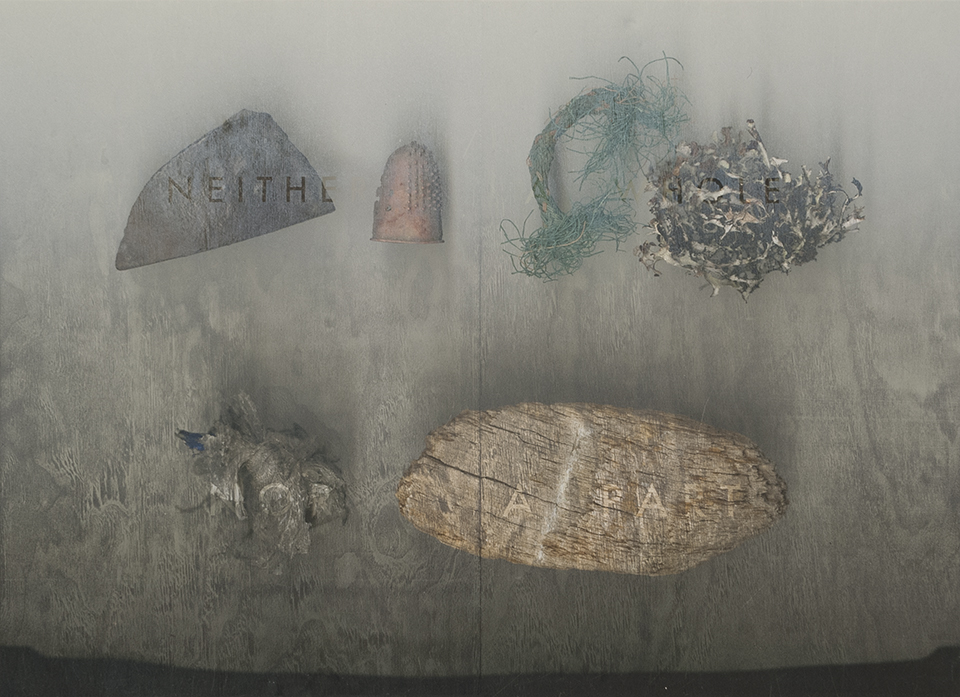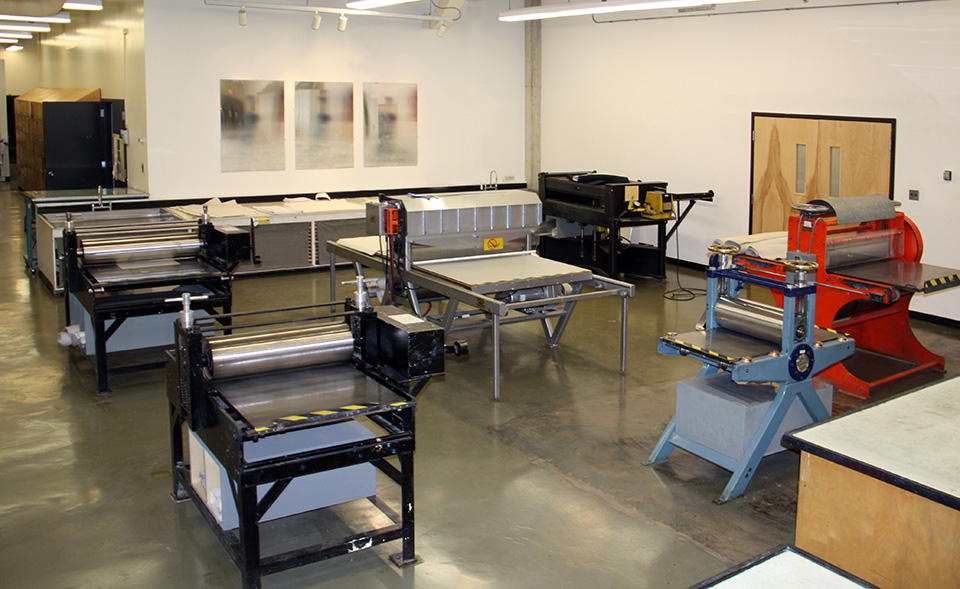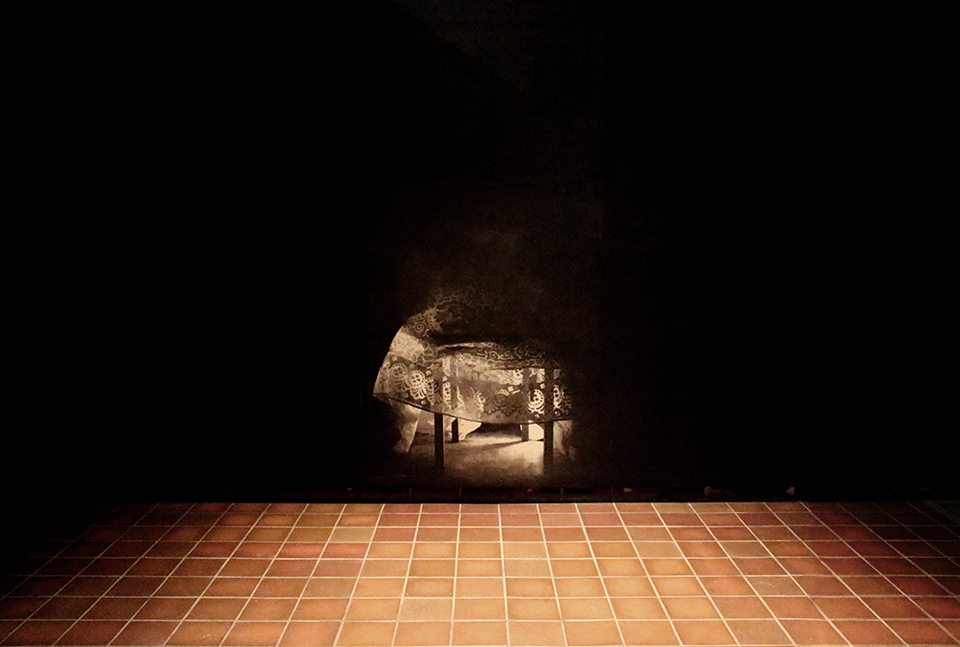Printmaking
The Printmaking program is internationally recognized for its innovative teaching and creative research practices. It is supported by active, award-winning professors, staff, and technicians, whose work has been exhibited in museums, universities, and at cultural institutions around the world.
The basic areas of Printmaking are relief, intaglio/etching, silkscreen, lithography, and digital media. This range of printing processes provides artists with an opportunity to explore a wide array of graphic languages, and to make prints through a variety of materials (wood and metal, layer imagery, and the combination of drawing with photographic and digital imagery). The print is an extremely fluid and dynamic medium that enables artists to work across a wide range of sensibilities and technical processes that encompass drawing, design, illustration, photography, digital media, book arts, as well as to explore ideas in inter-media, sculpture and installation. As a program we respect the historical traditions and foundations of printmaking whilst fostering a desire to grow and evolve printmaking practices.
Your Studies
Your education will include studies in:
- Relief
- Intaglio/Etching
- Silkscreen
- Lithography
- Digital Media
- Letterpress
- Typography
- Photography
- Installation (through print)
- Sculpture (through print)
- Book Arts
- Creative Methods in Studio Practice
- Research and Theory
- Contemporary Art Issues
- Fine Arts Practicum (practical work experience)
Careers
Careers available in this area include:
- Practicing Artist
- Cultural Sector-Art Gallery, Museum, Artist-run Centre, etc.
- Designer (for students in the BDes Printmaking route)
- Art Teacher (with after-degree in education)
- Visual Art Professor/Instructor in Post-Secondary Institution
Students who focus on Printmaking for their BFA degree often choose to go on to a MFA in order to get the qualifications and training needed to pursue a career as a professional practicing artist and/or to teach visual art at a post-secondary institution. Undergrads who have completed the BFA with a focus in Printmaking in the Department of Art and Design (as well as in other area of the BFA program) have regularly been accepted to top-ranked graduate programs around the world including: the Royal College of Art, London; University of Tennessee, Knoxville, USA; and Concordia University, Montreal, among many others. Moreover, Printmaking MFA students at the U of Alberta have been extremely successful securing tenure-track positions at recognized institutions across North America, Europe, and beyond.
Undergraduate Studies
Students who study Printmaking in their BFA degree (or as part of their BDes through the printmaking route) will gain an in-depth knowledge of all the printmaking techniques including relief, intaglio, lithography, silkscreen, and digital media. The program also fosters critical thinking skills, develops a deeper understanding of creative methods in studio practice, and exposes students to broader issues in contemporary art.
After completing a common first year in foundational studies, Printmaking students in the second year take one semester of silkscreen and one semester of intaglio/relief. In the third year students take one semester of intaglio and one semester of lithography, and in the final year of the program printmaking majors take a full-year, self-directed course in which they are introduced to photo and digital Printmaking processes. Printmaking students begin this three-year period of development with project-based assignments that initially stress technical and formal concerns, and which slowly shift into assignments that focus on thematic and conceptual development, challenging students to work more independently in order to develop a unique creative practice. By the 4th year of the program students are encouraged to support their studio practice with ideas and motivation drawn from other disciplines across the university, as well as to look more broadly to consider how social, political, philosophical or theoretical questions might relate to their own studio practice.
Although students are expected to develop a resolved body of work within the context of their printmaking courses, cross-pollination with other studio course is encouraged, which may result in a student producing work that encompasses print/installation, print/sculpture, and print/new media (particularly in the 4th year of the program).
Graduate Studies
The MFA in Printmaking provides graduates with in-depth training in print studio practices, including the development of refined technical, formal and conceptual skills. In addition, graduate students are also mentored in creative research methodologies that enable them to more effectively support their studio practice with academic research and/or theoretical discourse related to their thesis topic. Students also gain insights into how their own studio practice relates and intersects with questions within the broader field of contemporary printmaking/art. Although the program is focused on print studio practices, students can engage in cross-media creative work that could include drawing, video, sculpture and installation. Graduate students are encouraged to innovate and to push the limits of what Printmaking can be both in the studio and in theory. Many final thesis MFA printmaking exhibitions reflect this pluralistic approach to creative practice; however, students are required to produce a thesis exhibition that retains a strong link to Printmaking, and which has a cohesive and thematic/conceptual focus.
There are numerous funding opportunities for students throughout the program including scholarships, research assistantships and teaching assistantships. Teaching experience is stressed in the program and there are also opportunities for students to teach as primary instructor in printmaking, foundation and drawing courses.
This focus on both creative research and teaching has enabled many of our MFA graduates to engage in successful and active careers as visual artists, as well as secure tenure-track teaching positions at post-secondary institutions around the world including the Alberta College of Art and Design, Alberta; Concordia University, Quebec; University of New Mexico, New Mexico, USA, and University of Tennessee, Tennessee, USA, among many others.
Facilities and Technicians
The Printmaking area has a large and very well equipped studio with facilities and equipment for all major printmaking techniques including relief, intaglio, lithography, silkscreen, letterpress, and digital media. Artists can work in a wide range of techniques that include traditional, photographic and digital processes. The studio is also equipped to support large-scale work with wide format presses, printers, and exposure units. Graduate students have a separate printmaking studio that includes individual studio/office space, as well as access to large open studio for experimental work in drawing, sculpture, installation, and inter-media.
Two outstanding technicians, who are very experienced in all printmaking techniques including both traditional and digital media, support the printmaking area. The technicians are also active practicing artists and bring this experience to their technical mentorship.
Creative Research Highlights
The faculty and staff within the Printmaking Area are all very active studio artists, who have built strong connections to an array of international printmaking and contemporary art communities. The creative research focus of faculty and staff include examining the ethical, philosophical and social impacts of new biomedical technologies on society, as well as the complex issues related to environment/ecology stewardship. The impact of this creative research can be seen in the long list of exhibitions featuring work of faculty in the Printmaking Area including prominent venues such as: The Chelsea Art Museum, New York; UQAM Gallery, Montreal; MassMOCA, Massachusetts; The Royal Academy, London. Faculty are also represented in prominent institutional collections including the Canada Council for the Arts, Fitzwilliam Museum, Cambridge, UK, and the Victoria Albert Museum, London, U.K, Knoxville Museum of Art, The Wellcome Trust, London, and the Houghton Library, Harvard University, USA, among many others.
Much of this creative research has been supported by provincial and federal funding agencies including the Alberta Foundation for the Arts, Social Science Research Council of Canada, and The Canadian Stem Cell Network, which has further contributed to the area national and international profile, as well as provided graduate students with additional research and funding opportunities.
